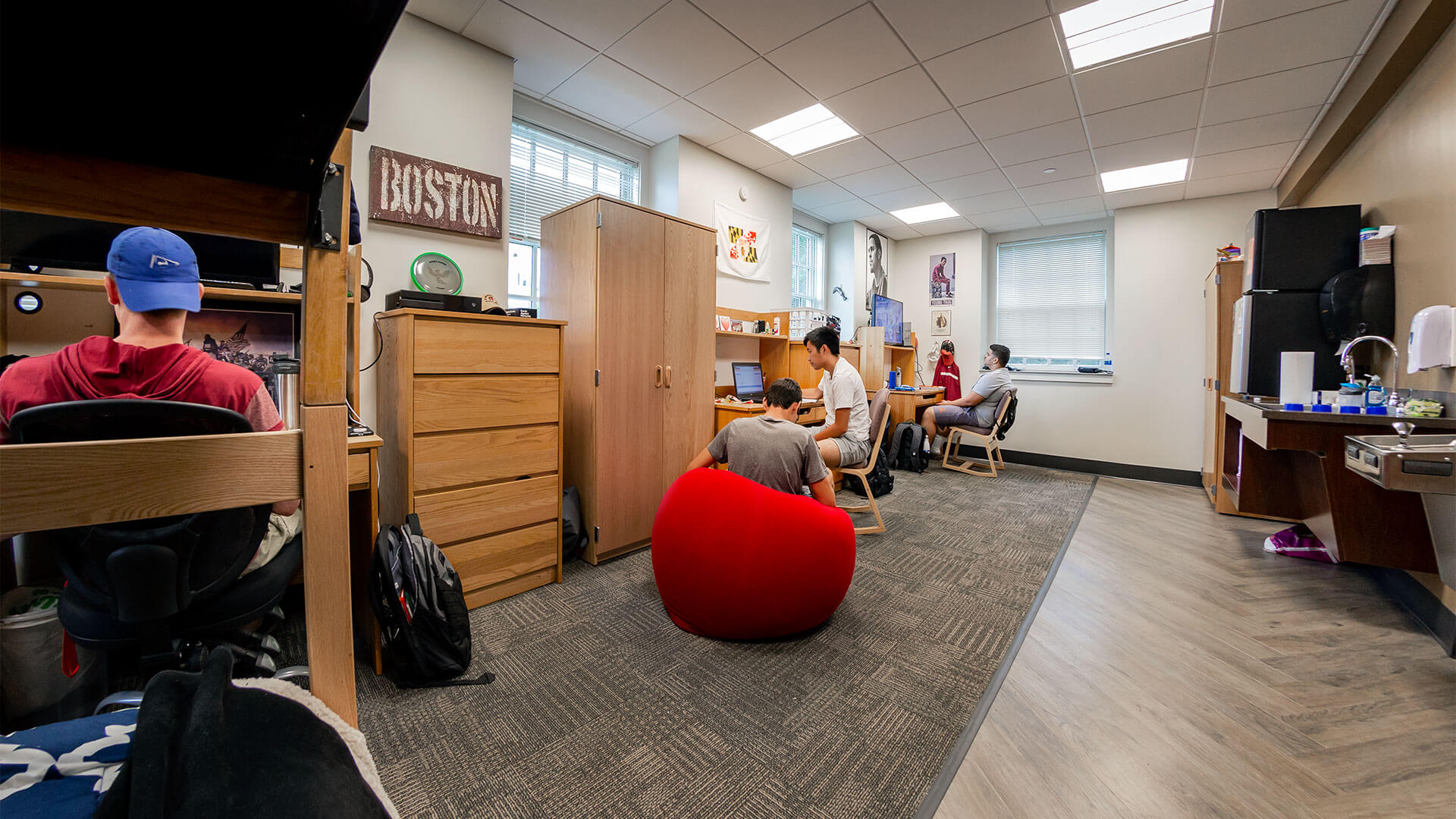- August 31, 2018
- By Annie Krakower
At the end of a hallway in Dorchester Hall, a couple of students play video games while another works on a laptop from a big red beanbag chair. On the shelves are a Frisbee, Cheez-Its and a Jenga game. It seems like a typical residence hall room—until you get to the sink, water fountain and sign by the door that reads “Lounge.”
Not even UMD could anticipate just how many students wanted to be Terps this fall. But the Department of Resident Life has offered a handful of untraditional solutions, including moving staff, offering buyouts and converting lounges like the one in Dorchester, to accommodate the larger-than-expected incoming class.
More than 9,600 undergraduates moved into residence halls last weekend. While the wait list stands at around 500, ResLife was able to house about 350 additional students. All students who applied by the May 1 deadline were guaranteed housing.
“We always anticipate it could swing one way or the other,” said Director of Resident Life Deborah Grandner of the number of students seeking housing. “This swing was larger than we’ve had in a long time.”
The housing crunch is not uncommon; Towson and Morgan State in Maryland and the University of Nevada, Reno, Jacksonville (Ala.) State and the University of California, Santa Cruz are among other universities nationwide facing similar challenges.
And while UMD isn’t cramming rows of bunk beds into the Armory like it did after World War II, it is using other tactics to extents it never has before, said Scott D. Young, associate director of administrative and business services in Resident Life.
This fall, 16 students are living in small study rooms converted into doubles, 12 are in lounges that accommodate triples, and about 120 are in “quad lounges.” Such spaces include bunked beds, shared wardrobes, and either desks or study tables. Students in these rooms receive a 15 percent discount from the standard double room rate.
“In some respects, there’s some advantages because you have a sink and a refrigerator,” Grandner said of the lounges. ResLife is also developing a list of available quiet study spaces to compensate for the lounges lost to housing.
Around 190 “flex rooms”—doubles or triples with an added bed—are being used this year, up from about 110 last fall.
“I think they converted the space as best as they could,” said senior Bryan Gallion, president of the Resident Hall Association, adding that the flex rooms are “a little more cramped than usual, but it’s not uncomfortable to live there.”
Residential Facilities helped prepare for the influx, hauling extra furnishings upstairs, cutting additional keys and changing locks, installing smoke detectors, and covering windows in lounges to make them suitable for occupancy.
“Imagine having to move an extra six or eight beds up three flights of stairs in an un-air-conditioned building,” Young said.
ResLife used other ways to alleviate the crowded residence halls as well. It offered $750 to students willing to give up their housing, and 19 accepted. It waived late cancelation fees, no questions asked. Residential staff in a wing in La Plata Hall even volunteered their offices, moving to the basement to make room for 17 more students.
A ResLife spokeswoman said the office had received complaints from parents, focused on tight quarters and students not having their own desks. While ResLife hopes the crunch is a one-semester issue, students in about half of the flex rooms used last year stayed through the academic year, despite rooms opening up elsewhere.
“I think really, largely speaking, our parents and the students have done a very good job of accepting this and understanding that we’re trying to manage this situation,” Young said. “And it’s important for us to make sure that everybody gets on campus and has a positive experience.”
Click here for a 360-degree view of a converted lounge.
Topics
Campus & CommunityTags
Student Life